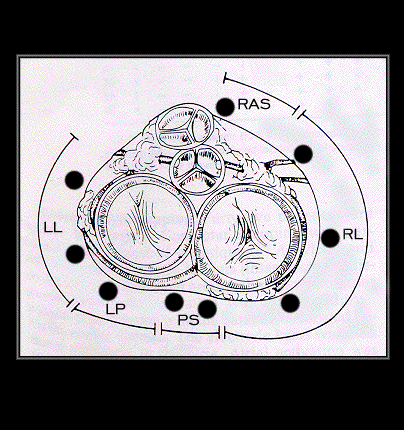
This figure, adapted from the work of Gallagher et al (Circulation 51:767, 1975), illustrates the location of the bypass tracts in a group of patients in whom the location was proven by electrophysiologic testing. It demonstrates that the bypass tracts can be located virtually anywhere in atrio-ventricular ring LL = left lateral LP = left posterior PS = posterior septum RL = right lateral RAS = right anterior septum The accumulated experience of several groups of investigators since this work have confirmed these findings. The majority of bypass tracts (50-60%) are located on the left side, about 25% are found in the paraseptal regions and the remainder are located on the right side.
